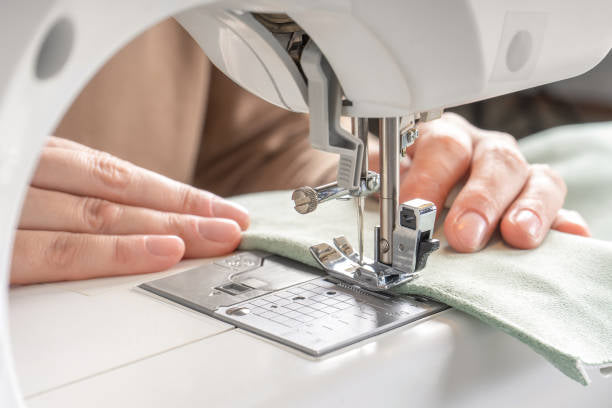
Stitching: The Hidden Hero of Garment Longevity
Share
While fabrics often take the spotlight in clothing, the stitching is just as important for durability, comfort, and overall performance. The type of stitch and its execution determine whether a garment will hold up through wear, maintain its shape, and feel comfortable against the skin. High-quality stitching not only secures seams but also enhances the garment’s finish and functionality.
Common Types of Stitches
1. Lock Stitch
- Definition: The most common stitch type, created by interlocking a top thread with a bottom thread.
-
Features:
- Strong, secure, and does not unravel easily.
-
Produces a neat, professional finish on both sides.
- Uses: Everyday seams in shirts, trousers, and dresses.
- Strengths: High durability, clean look.
- Limitations: Limited stretch—can break if used on very stretchy fabrics without elastic thread.
2. Chain Stitch
- Definition: Made by looping a single thread in a chain-like pattern.
-
Features:
- Has a slight stretch, which makes it useful for flexible seams.
-
Can unravel easily if the end is not secured.
- Uses: Decorative stitching, denim waistbands, and some stretch garments.
- Strengths: Adds visual appeal, allows moderate flexibility.
- Limitations: Less durable than a lock stitch if exposed to heavy stress.
3. Overlock Stitch (Serger Stitch)
- Definition: Uses multiple threads to wrap around raw fabric edges.
-
Features:
- Prevents fraying and unravelling.
- Can sew and finish edges simultaneously.
-
Provides a professional, polished look inside garments.
- Uses: T-shirts, knitwear, activewear, and edges of woven fabrics.
- Strengths: Excellent edge protection, neat appearance, slight stretch for knits.
- Limitations: Requires special machines (sergers) and more thread.
4. Cover Stitch
- Definition: A double (or triple) row of stitches on the outside with looping threads on the inside.
-
Features:
- Provides flexibility while maintaining a flat, professional hem.
-
Commonly seen on activewear hems and neckline bindings.
- Uses: Hemming stretch fabrics like leggings, sportswear, and swimwear.
- Strengths: Flexible, smooth finish that stretches with the fabric.
- Limitations: Mainly used for finishing hems, not for joining heavy seams.
Indicators of High-Quality Stitching
- Even Stitch Length → Consistency signals attention to detail.
- Secure Seams → Strong stitches that won’t unravel easily.
- Reinforcements at Stress Points → Extra stitching at high-stress areas (shoulders, pocket openings, underarms) to prevent tearing.
- No Loose Threads → Clean finishing reflects precision.
- Balanced Tension → Threads lie flat without puckering or gapping.
Why Stitching Quality Matters
- Durability: Poor stitching leads to seams unraveling or fabric tearing long before the material wears out.
- Comfort: Smooth, flat stitches reduce irritation and chafing against the skin.
- Appearance: Neat stitching enhances garment aesthetics and signals premium craftsmanship.
- Performance: Specialized stitches (like cover stitches in sportswear) allow clothing to stretch and move with the body.
In summary: The right stitching method, combined with precise execution, ensures garments are strong, comfortable, and long-lasting. High-quality apparel always balances fabric quality with superior stitching techniques.
